Now Viewing:
Slavery and Abolition

The Explosion of the Redding Baptist Meeting House
The explosion of Redding’s Baptist Meeting House provides a glimpse of the various arguments and conflicts about slavery swirling in one community before the Civil War.
Read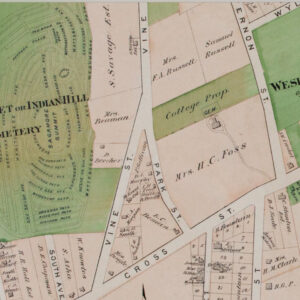
Middletown’s Beman Triangle: A Testament to Black Freedom and Resilience
One of the earliest and most politically active free Black neighborhoods in Connecticut emerged in Middletown in the late 1820s, the Beman Triangle.
Read
Hebron’s Josephine Sophia (White) Griffing and a Vision for Post-Emancipation America
From before emancipation and the 13th Amendment, Josephine Sophie White Griffing of Hebron, Connecticut, was an ardent advocate for enslaved and free people.
Read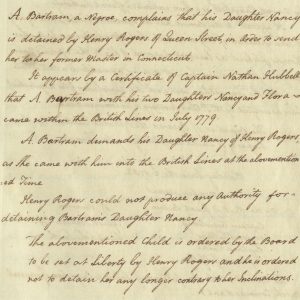
Black Loyalist Refugees: Toney Escapes During the Burning of Fairfield
The British burning of Fairfield during the Revolutionary War provided an opportunity for enslaved people to escape, including a man named Toney.
Read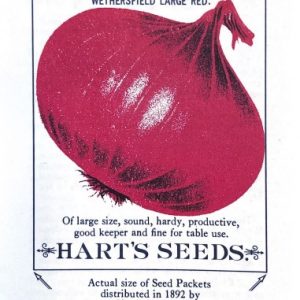
Oniontown: How Hard Work, Tall Tales, and Red Onions Built Wethersfield
Until the 19th century, the red onion trade supported Wethersfield as the first commercial town along the Connecticut River.
Read
James Lindsey Smith Takes the Underground Railroad to Connecticut
James Lindsey Smith was one of many slaves who found freedom through the Underground Railroad network that included many stops in Connecticut.
Read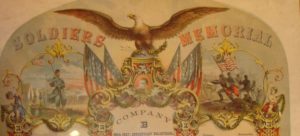
Connecticut’s Black Civil War Regiment
“If you win freedom and citizenship, we shall share your freedom and citizenship.” With these words, abolitionist Frederick Douglass reminded African American soldiers from Connecticut that they fought for the hopes of many.
Read
Apostle of Peace: Elihu Burritt’s Quest for Universal Brotherhood
Elihu Burritt, a blacksmith by trade, became an advocate for peace around the world throughout the 19th century.
Read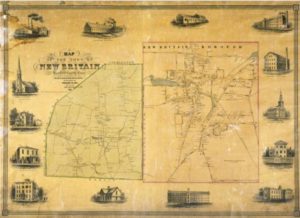
“A Noble and Precious Life”: Edgar M. Woodford, Civil Engineer, Abolitionist, and Soldier
This Avon-born man not only put his talents on the map, literally, he also went west to secure Kansas as a free state.
Read
The Amistad
After enslaved people revolted and took control of the Amistad in 1839, Americans captured the ship off Long Island and imprisoned the enslaved in New Haven.
Read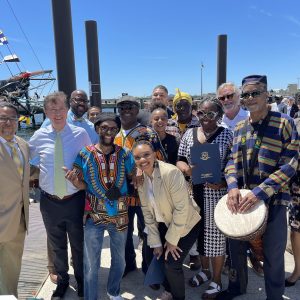
Connecticut’s First Known Juneteenth Celebration in Norwich – Who Knew?
In 1989, the Norwich Branch of the NAACP organized the first official Juneteenth celebration in Connecticut—several other towns followed suit in subsequent years and decades.
Read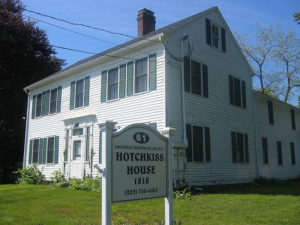
Prospect’s David Miles Hotchkiss and the Free Soil Party
David Miles Hotchkiss was an educator, abolitionist, and public servant who served the town of Prospect throughout his entire life.
Read
John Brown: A Portrait of Violent Abolitionism
John Brown of Torrington used violence to oppose the spread of slavery prior to the Civil War, ultimately leading a bloody raid on the armory in Harper’s Ferry, Virginia.
Read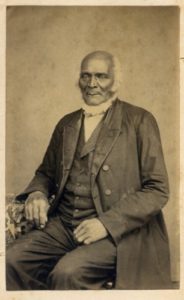
James Mars’ Words Illuminate the Cruelty of Slavery in New England
Mars’ landmark memoir of the mid-1800s reveals how enslaved men and women suffered—and resisted—the injustices of bondage.
Read
A Different Look at the Amistad Trial: The Teenager Who Helped Save the Mende Captives
James Benajmin Covey, a former slave, was only 14 years old when asked to serve in one of the most publicized trials in American history.
Read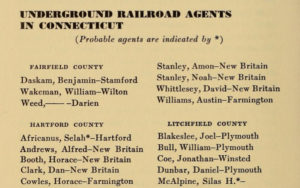
New Britain Plays Part in the Underground Railroad
The Underground Railroad, developed in the early 19th century, was a system of safe havens designed to help enslaved people escape to freedom.
Read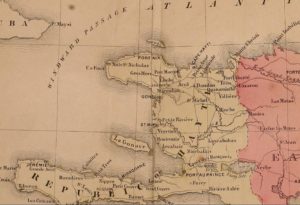
Ebenezer Bassett’s Historic Journey
Ebenezer Bassett, an educator, activist, and associate of Frederick Douglass, served the US as its first African American ambassador.
Read
From the State Historian: Connecticut’s Slow Steps Toward Emancipation
Slavery remained in the Land of Steady Habits until 1848, and it was not quick to advance suffrage for African Americans, either.
Read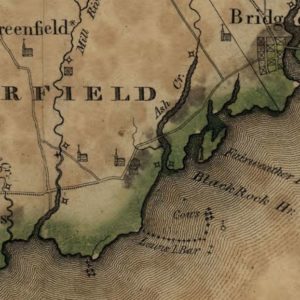
Caleb Brewster: A Patriot Against Freedom
Caleb Brewster—Fairfield, Connecticut’s resident member of the Culper Spy Ring during the Revolutionary War—was also an active participant in the African Slave Trade.
Read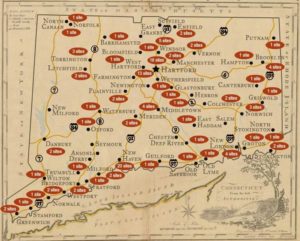
Site Lines: Connecticut’s Freedom Trail
Sites along the Connecticut Freedom Trail mark key events in the quest to achieve freedom and social equality for African Americans in the state.
Read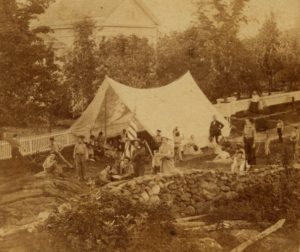
Reading, Writing, and the Great Outdoors: Frederick Gunn’s School Transforms Victorian-era Education
In 1850, this educator, prominent abolitionist, and outdoorsman founded The Gunnery, a school in Washington, Connecticut.
Read
The Seth Wetmore House: A Storied Structure of 18th Century Middletown
Seth Wetmore was a merchant, judge, and deputy to the General Court of Connecticut. His house is one of Middletown’s oldest homes and one of thirty-three in the city listed on the National Register of Historic Places.
Read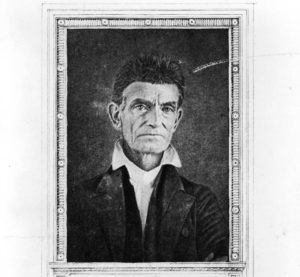
John Brown Born – Today in History: May 9
On May 9, 1800, the man who became a catalyst for the Civil War was born in an 18th-century saltbox house in West Torringford.
Read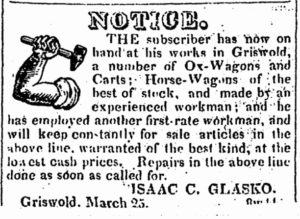
Blacksmith Isaac Glasko Challenges the State Constitution
Isaac Glasko was a blacksmith of mixed African American and Native American descent who challenged 19th-century voting rights in Connecticut.
Read
Connecticut’s Black Governors
For approximately one hundred years, Connecticut’s “Black Governors” were used by white authorities to help maintain order among the black population.
Read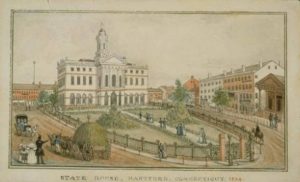
Jackson v. Bulloch and the End of Slavery in Connecticut
Nancy Jackson sued for her freedom in 1837. Her victory helped further the abolitionist cause in a state slowly moving toward outlawing slavery.
Read
Site Lines: Fortresses of Faith, Agents of Change
Black churches, including the earliest ones in Connecticut, have long been at the forefront in the battle for social progress and equality.
Read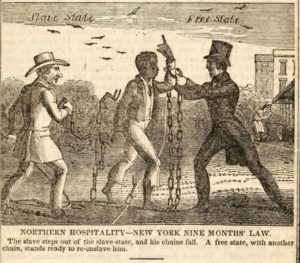
The Fugitive and the Hero
A runaway slave, evading the legal realities of the Fugitive Slave Law while working aboard the steamship Hero, jumped ship in East Haddam, narrowly avoiding the slave catchers that awaited him in Hartford.
Read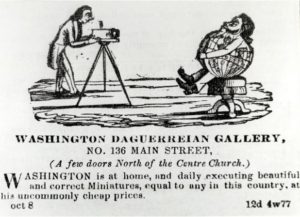
Augustus Washington (1820 – 1875): African American Daguerreotypist
Though his work depicts people of different classes and cultures, ironically, no portraits of African Americans survive from his years in Hartford.
Read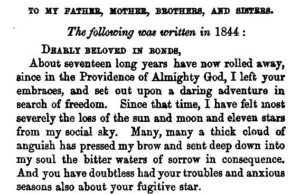
Reverend James Pennington: A Voice for Freedom
Having escaped from slavery in Maryland, this accomplished pastor, publisher, and freedom fighter challenged racism wherever he found it, even within the ranks of the abolitionist movement and the ministry.
Read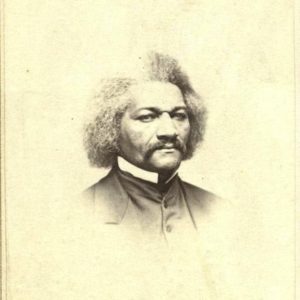
“An Admirable Portrait” of Frederick Douglass
Hartford photographer Stephen H. Waite capitalized on the public’s interest in the great abolitionist, Frederick Douglass.
Read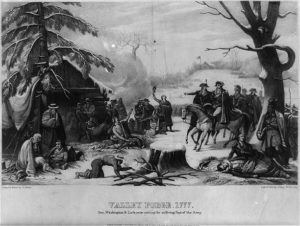
A Connecticut Slave in George Washington’s Army
Nero Hawley, born into slavery in Connecticut in the 18th century, fought in the Revolutionary War.
Read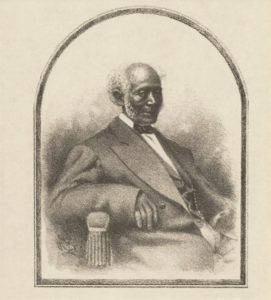
James Williams, More than Trinity College’s Janitor
James Williams was an escaped slave who became a janitor at Trinity College from the institution’s founding in 1823 until his death in 1878.
Read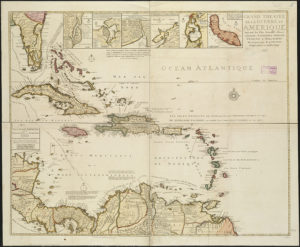
Connecticut and the West Indies: Sugar Spurs Trans-Atlantic Trade
This profitable exchange brought wealth and sought-after goods to the state but came at the price of supporting slavery in the bargain.
Read
The Great Remedy: Picturing the Emancipation Proclamation
On January 1, 1863, the Emancipation Proclamation went into effect, declaring more than three million African Americans in those states in rebellion against the United States to be forever free.
Read
Slavery and the Pequot War
Diaries, letters, and other sources from the early colonial era document cases of Native enslavement, including during the Pequot War.
Read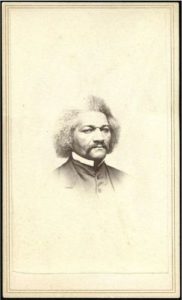
Speaking under the Open Sky: Frederick Douglass in Connecticut
The famous abolitionist Frederick Douglass had several connections to Connecticut, including run-ins with a number of the state’s vocal slavery proponents.
Read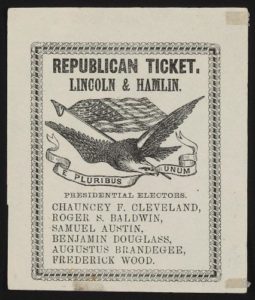
A Successful Lawyer and Politician Who Never Went to College
Chauncey Fitch Cleveland was a lawyer and politician who served the state of Connecticut and the nation, despite never pursuing a college education.
Read
Changing Sentiments on Slavery in Colonial Hebron
Residents of Hebron rescued local enslaved people Lowis and Cesar Peters, and their children, from South Carolina slave traders.
Read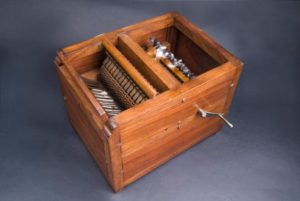
North and South: The Legacy of Eli Whitney
After studying to become a lawyer, Eli Whitney actually helped further American industrial production methods through his numerous clever inventions.
Read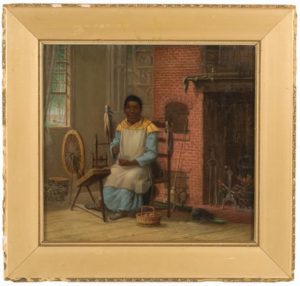
Nancy Toney’s Lifetime in Slavery
From scant evidence, including a portrait, gravestone, census data, and will, a partial image of a Connecticut life lived in slavery emerges.
Read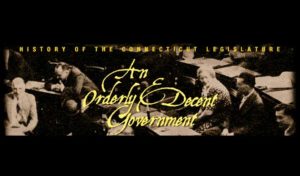
An Orderly & Decent Government: Making Self-Government Work, 1776-1818
The freedom won in the American Revolution did not spread to African Americans. The Constitution of 1818 formed the basis for state government until 1965.
Read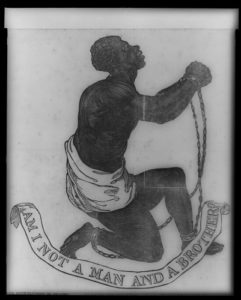
Early Anti-slavery Advocates in 18th-century Connecticut
Ideals advanced during the American Revolution inspired many of the state’s religious and political leaders to question and oppose slavery in the late 1700s.
Read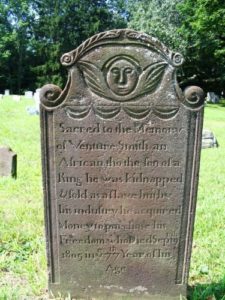
Venture Smith, from Slavery to Freedom
Smith’s account sheds light on the experience of enslaved and free blacks in 18th-century Connecticut.
Read
Hidden Nearby: John Brown’s Torrington Birthplace
Ruins are all that remain of the birthplace of this transformative figure in US history.
Read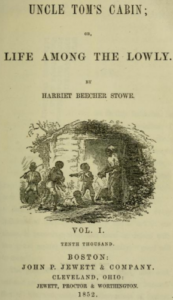
Uncle Tom’s Cabin Begins Serialization – Today in History: June 5
On June 5, 1851, the first chapter of what became the landmark novel Uncle Tom’s Cabin appeared in the National Era, an anti-slavery newspaper in Washington, DC.
Read
Gradual Emancipation Reflected the Struggle of Some to Envision Black Freedom
Connecticut enacted gradual emancipation in 1784 but the abolition of slavery would not occur until 1848.
Read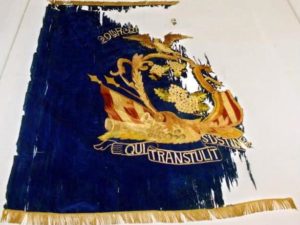
The 29th Connecticut Colored Infantry Regiment Leaves for War – Today in History: March 19
On March 19, 1864, the 29th Connecticut Colored Infantry Regiment was preparing for deployment to the South to fight in the Civil War.
Read
The Fight Over Slavery Reaches Torrington
In the years prior to the Civil War, Torrington, like many towns in New England and the rest of the country, found itself divided by the issue of slavery.
Read
Joshua Hempsted Born – Today in History: September 1
On September 1, 1678, Joshua Hempsted was born in New London, Connecticut.
ReadMore Articles




